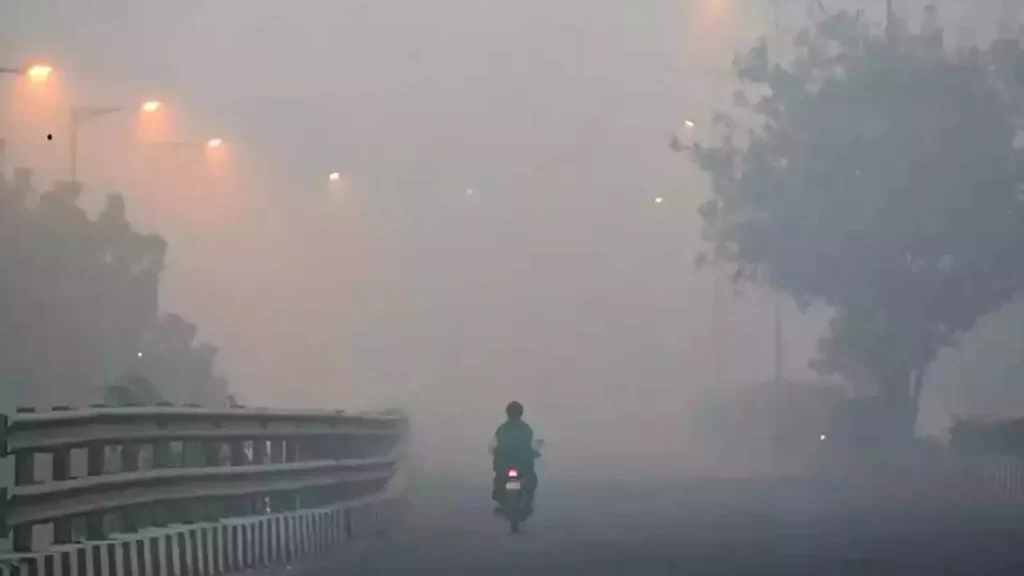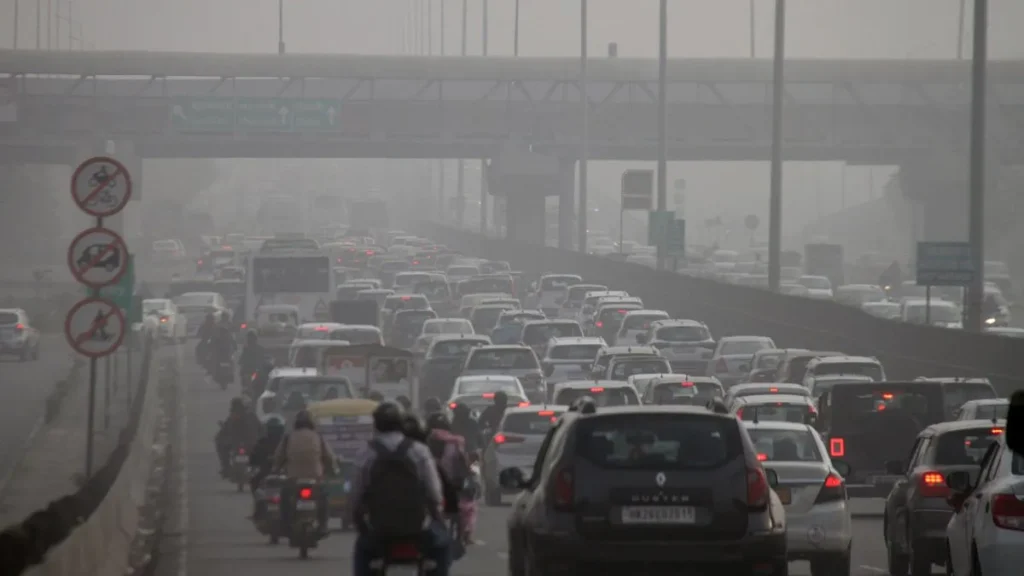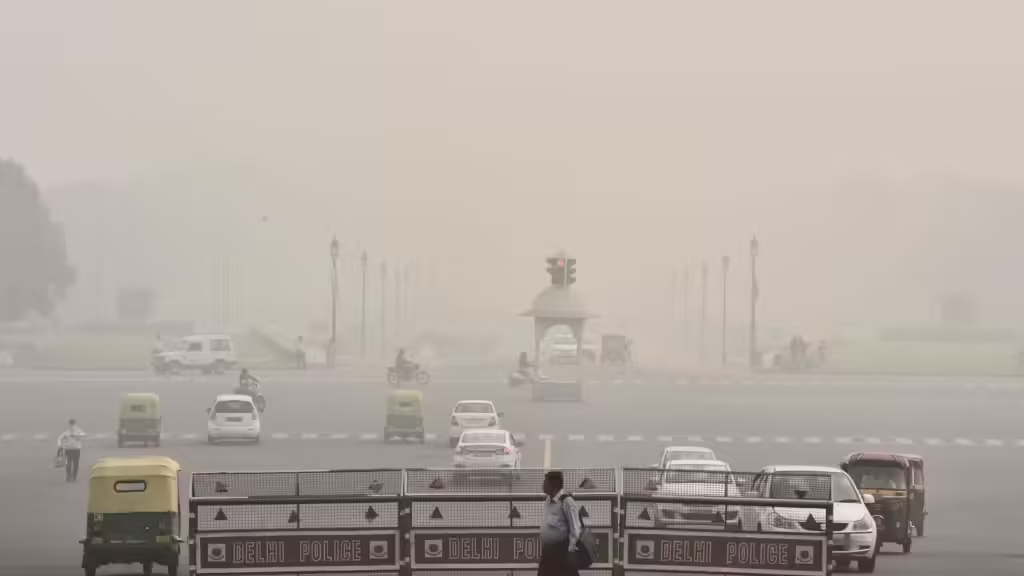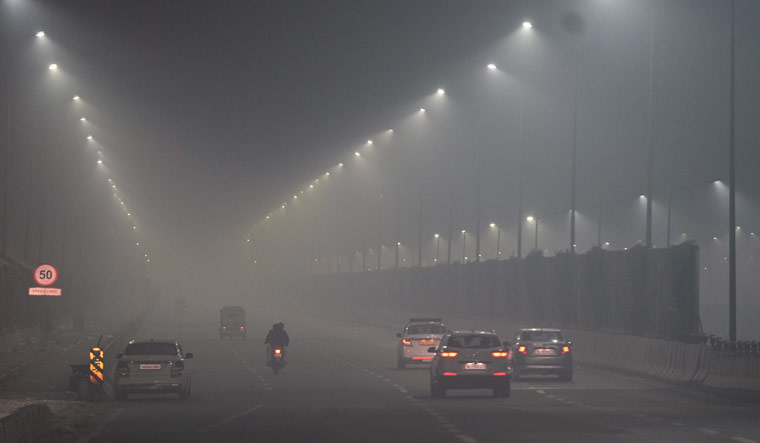Delhi’s Air Quality: As Delhi faces increasingly poor air quality, residents must understand the implications of the latest data. According to the October 19, 2024, AQI (Air Quality Index) bulletin from the Central Pollution Control Board (CPCB) of India, the capital reported an alarming AQI of 278, categorizing it as “Poor.” PM10 emerged as the primary pollutant, contributing significantly to the city’s air quality challenges. The presence of PM2.5 has also been confirmed.
With 36 out of 40 monitoring stations actively reporting data, the situation highlights growing concerns for public health. Delhi, one of the most densely populated cities in the world, is experiencing heightened risks as winter approaches, bringing with it the familiar blanket of smog that intensifies air pollution.
(PM10 and PM2.5 are critical indicators of air quality and have significant health implications. PM10 – particulate matter with a diameter of 10 micrometers or smaller; PM2.5 – finer particulate matter with a diameter of 2.5 micrometers or smaller).
Understanding AQI Categories: Implications for Residents
Residents should be aware of the AQI categories that define air quality levels and their associated health impacts:
- Good (0-50): Minimal impact; air quality is satisfactory with little or no risk to health.
- Satisfactory (51-100): Minor breathing discomfort may occur for sensitive individuals.
- Moderate (101-200): Breathing discomfort may be experienced, especially for those with asthma or heart conditions.
- Poor (201-300): Breathing discomfort may occur for individuals with prolonged exposure, affecting overall health.
- Very Poor (301-400): Respiratory illnesses may develop with prolonged exposure, impacting those with existing health issues.
- Severe (401-500): Significant health effects are observed; even healthy individuals may be affected, while those with existing illnesses face severe risks.

Delhi’s Air Pollution Dilemma: Contributing Factors
Delhi’s air pollution stems from various sources, including:
- Vehicle Emissions: Exhaust from transportation is a major contributor to the city’s air quality issues.
- Agricultural Practices: The burning of crop residues releases harmful pollutants such as carbon monoxide, particulate matter, and volatile organic compounds.
- Construction Dust: Ongoing construction activities generate significant dust, accounting for over 50% of PM10 and PM2.5 concentrations in the region.
- Industrial Discharges: Unregulated industrial operations and emissions from factories complicate the air quality landscape.
- Improper Waste Management: The incineration of garbage and waste materials increases pollution levels in the capital.
- Reliance on Fossil Fuels: The heavy dependence on fossil fuels significantly contributes to worsening air quality.
- Adverse Meteorological Conditions: Unfavorable weather patterns can exacerbate existing air pollution levels.
- Pollutant Transport: Northwesterly winds can carry pollutants into Delhi, intensifying the air quality crisis.
Read this also: Seunghan’s Exit from RIIZE: A Turbulent Return and Fan Backlash
The Need for Precaution
Given the current AQI level of 278, residents are urged to take appropriate precautionary measures. Limiting outdoor activities, especially for vulnerable populations, and using masks in public and air purifiers indoors can help mitigate health risks. Awareness of air quality conditions is crucial for safeguarding health during this challenging season. As Delhi prepares for winter, addressing air pollution remains a pressing concern for both residents and policymakers.

A Nationwide Perspective on Air Pollution
Delhi serves as a broader representation of the country’s air pollution challenges, which extend to other major cities with significant industrial activity. As winter approaches, it is essential for the entire nation to brace for the impending smog and elevated pollution levels.
To combat these issues effectively, residents are encouraged to adopt proactive measures. Utilizing public transportation, engaging in carpooling, and minimizing waste generation can collectively make a substantial difference. Additionally, incorporating practices such as using cleaner energy sources, reducing industrial emissions, and increasing green spaces can further enhance air quality.

Taking these necessary precautions in advance is crucial for safeguarding public health and ensuring a cleaner environment with the colder months approaching. Addressing air pollution is not just a local concern; it requires a united effort across the country.








